Although summer this year is a mixed success, almost all of our girls look traditionally attractive. But they are invisible tears to the world – at the cost of what sacrifices are achieved graceful glossy legs, truly know only their owners. Be cool, we can pay the price… Or maybe many people just don’t all know what progress has come to – don’t know, for example, about photoepilation? Then there is a good reason to talk about the painful…
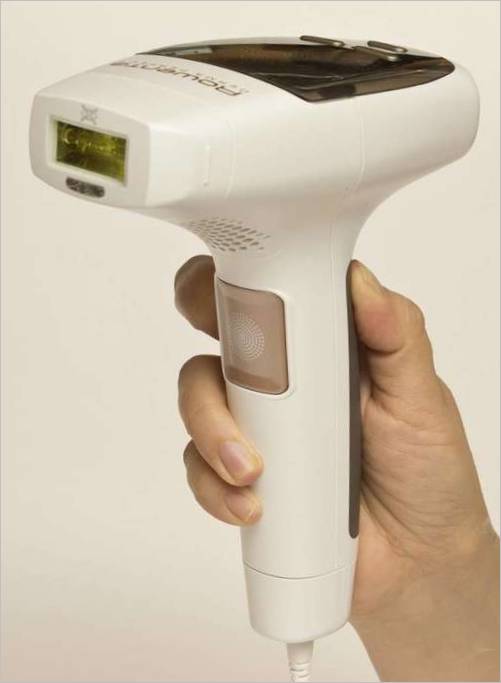
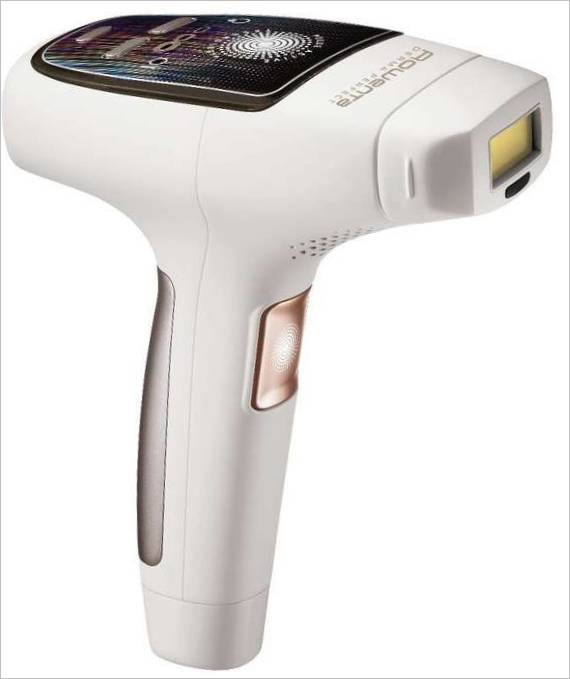
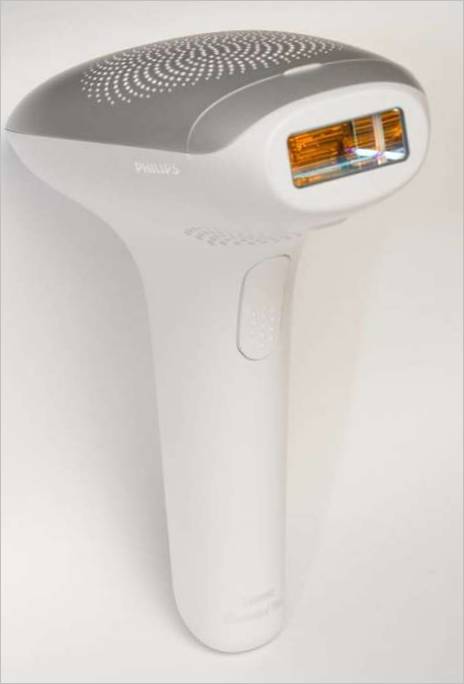
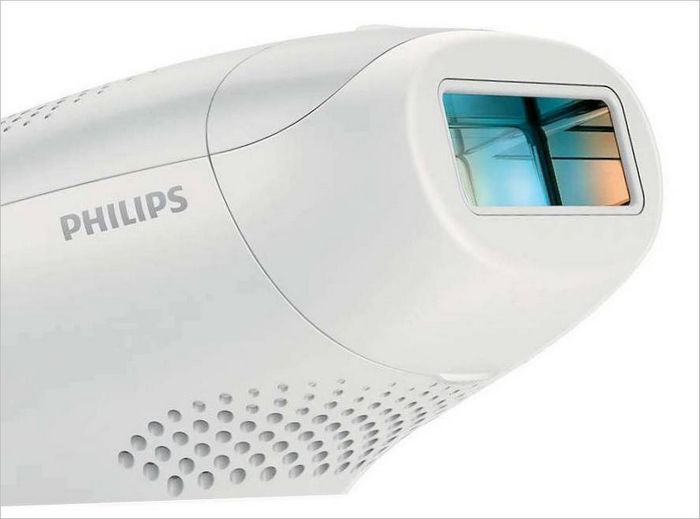
WHAT IS PHOTOEPILATION?
The principle of operation is this: the device generates light pulses t.n. “Intense pulsed light” IPL , which delivers a “shock” effect on the roots of the hair during the treatment of a particular skin area. The light photo pulses affect the hair roots and put the follicles into a “resting phase”. After several treatments, the hair growth stops in that area.
To prevent re-activation of hair follicles during the first two months the procedure should be repeated every two weeks. The skin should then be completely smooth and hair growth should stop.
Usually a significant reduction in the number of hairs is observed after two treatments every two weeks. The optimal result can be achieved on average after 4-5 procedures every two weeks.
But hair follicles can activate, and hair growth starts again. Therefore, it is recommended to repeat the treatment every 4-6 weeks to maintain the results. The interval of hair removal depends on the individual characteristics of the body.
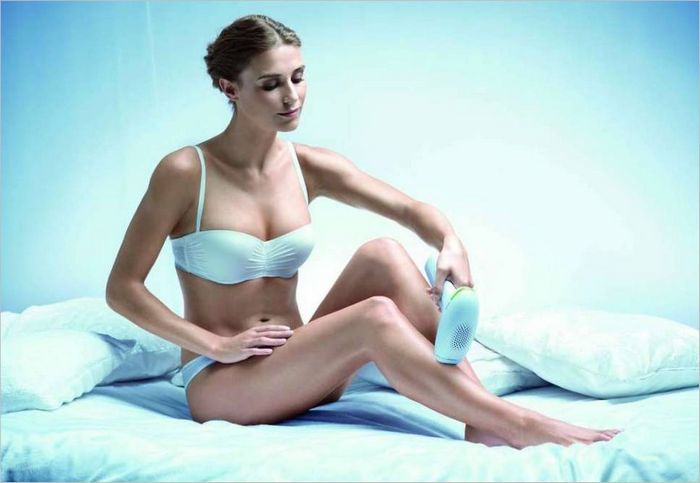
The right phase for epilation…
In the course of hair growth, hair follicles go through three phases. This:
Anagen, the active growth phase of the hair follicles. Melanin concentration is at its highest point, since it is responsible for hair pigmentation.
Katagen is a short transitional phase that follows anagen and signals the end of the active hair growth phase. This period is called the degradation phase. It usually lasts about 2 to 3 weeks.
Telogen – the period in which the hair follicle is at a complete standstill. This is the longest phase, lasting about 100 days, experts call it the resting phase. During this time new hairs break through among old hairs and the growth cycle begins anew.
Only hair in anagen phase can be treated with IPL. In order for all active hair to be treated, you need to do 3 treatments with two-week breaks in between body hair and 4 treatments with two-week breaks in between facial hair in women .
(from Remington website – ilightPro
PHOTOEPILATOR USE
For whom it is not suitable?
This is probably the most important point: the device is very expensive and will not be useful for everyone! Photoepilators are effective on blond, brown and black hairs on fair or dark complexion. But in the same way all photoepilators are NOT effective for removal of red, light-blond, bleached for example, peroxide and gray hair – these hairs have little pigment and the device simply “does not see” them. The photoepilator is not suitable for very dark skin – very dark and tanned you have to wait until the tan comes off – and ethnically determined dark skin.
In addition, there are quite a few limitations associated with skin care. Here’s what the experts at Remington recommend after each treatment: “Avoid the sun: do not sunbathe, do not use a tanning bed for at least 2 weeks after the treatment.”. That is, if you need 4-5 treatments, you’re left without a tan for a couple of months, and it’s better to know about it before you buy an expensive device.
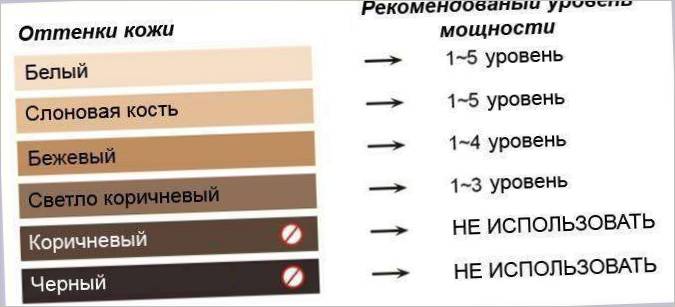
Where to use?
Photoepilator can affect the hair on absolutely any part of the body and even on the face – for example, to treat the area over the upper lip or chin. To help narrow down the area you’re working on and give you extra protection, some models also offer attachments to remove facial hair Philips Lumea Precision and Precision Plus .
These extensions are equipped with additional light filters to protect the facial skin from possible damage. One should remember that under no circumstances should the photo depilator be used for correcting the eyebrows’ shape: the photo impulse can be harmful for the eyes.
How to use?
Skin generally responds well to photoepilation, but if you have very sensitive or very light skin, you should take a test flash and wait 24 hours to see if there is a skin reaction? Your hair should be shaved or trimmed to a short length before the treatment. This is to transmit the light impulse to the hair follicle in the most efficient way. And then, when hair growth slows down or stops, the photoepilator can be used anywhere – even in bed or on your favorite sofa, because the process will not be associated with shaving or pulling hair, using water or foam.
If you use the photoflash on long hair, then, most likely, the procedure will be accompanied by the smell of burnt hair. During epilation you should avoid moles, tattoos, scars, pigment spots, freckles, you can not use the photoepilator on wet skin. Few people perform epilation on breasts, but if it is necessary, it is necessary to avoid nipples, and at processing of bikini zone – not to touch mucous membranes.
The device itself needs attention: all nozzles, filter glass and surface of the photoepilator should be absolutely clean, nothing should hamper the light penetration. For battery-powered devices you should charge them fully before each use.
Many users admit that there is one difficulty in using the device, especially on large areas of the body. You can’t tell which area has been treated and which has not. Indeed, there is no way to tell by sight, and repeated treatment is not recommended: it does not add effectiveness, but only increases the risk of skin reactions. To counteract this problem, some models have something to help you glide the appliance smoothly over your body like the Safety Ring and Slideand Flash mode on Philips Lumea . But in any case – photoepilation demands absolute concentration on process.
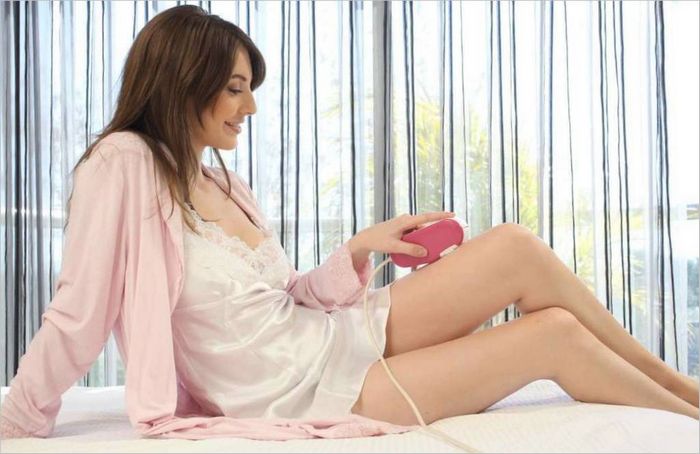
When to use?
It is optimal to use a photoepilator in the winter or spring, so you’ll be fully equipped for the summer season of open dresses and miniskirts. But there are no seasons for hair removal in the armpit area, bikini zone and problem facial hair, so photoepilators are relevant at any time of the year.
It should be at least 48 hours after sunbathing or visiting the tanning bed – remember this too.
After treatment
In addition to prohibiting tanning beds and sunbathing for 2 weeks after the procedure, Remington experts make these recommendations:
Make sure that the skin exposed to the treatment is clean and dry.
Drink lots of water to hydrate your skin.
Do not swim, do not take a hot bath, hot shower, do not use a steam room and sauna for 24 hours after the procedure.
Avoid contact sports for 24 hours.
Experts Philips advises not to use cosmetics on the day of the procedure on the skin areas of the face.
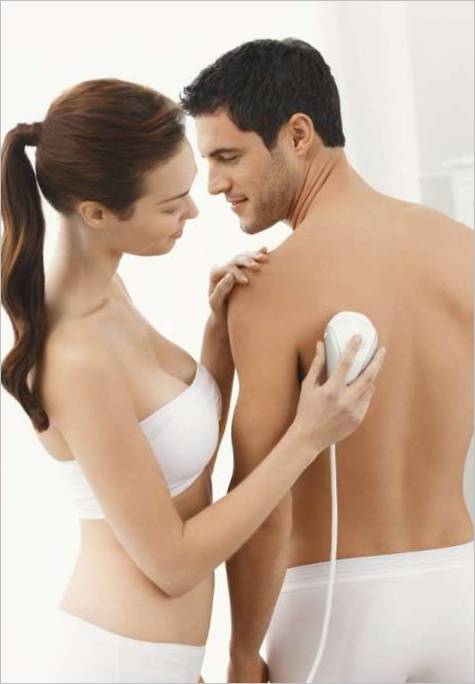
HOW TO CHOOSE A PHOTOEPILATOR
Electrical or battery powered?
It is impossible to say that a certain type of power supply is preferable – everyone decides for himself, but if you really choose a device that works only from the battery, then you should find out the charging time and battery life beforehand, so you won’t be disappointed later.
Charge level indicator is a good thing. Many people are convinced that the model in the form of “phone” work only from the network, and in the form of “hair dryer” – from the battery. As for the “phones” – that’s right, but the models, similar in appearance to the “hair dryers” can be battery-operated and networked, such as Philips models.
Models in the form of a “hair dryer” may seem less convenient because you have to hold them strictly at a 90º angle to the skin – it is not immediately possible. They have a well-defined spout with a light window, so it’s easier to see exactly where you’re skinned.
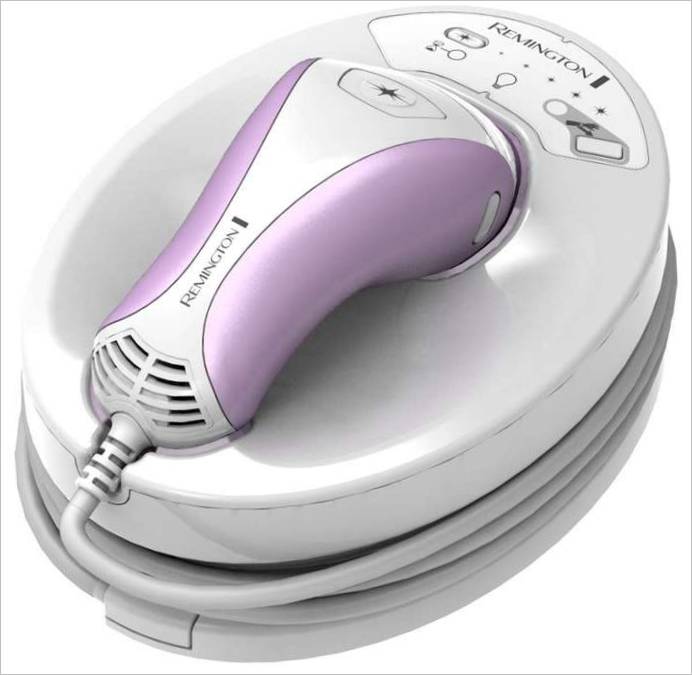
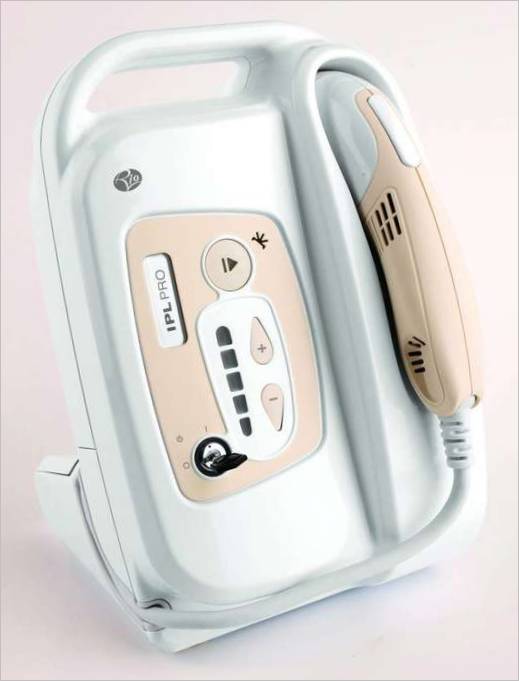
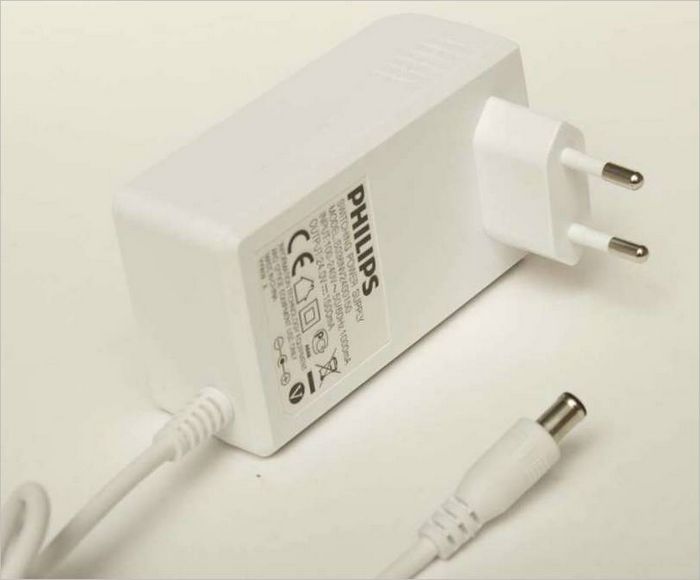
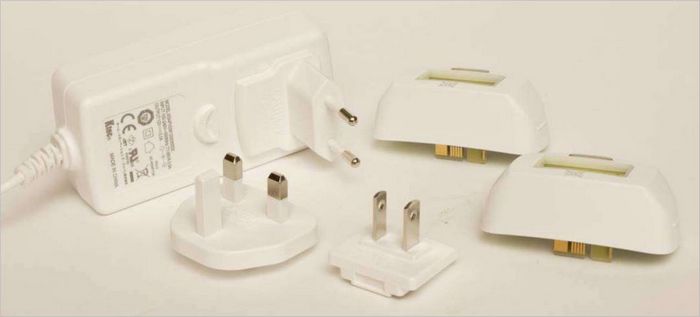
Which flash is better?
The most important parameter when choosing a photoepilator is the power of a single photoflash. The higher it is, the more effective hair removal, but at the same time – the greater the risk of skin burns. It is believed that the optimal power of the flash is about 5 J/cm², but the average power is about 1 J/cm². In many models the flash power is adjustable see the manual of the device . table .
On the face and other sensitive areas, you should use less power 3.5 to 4 J/cm² , also on very light skin, to avoid even the smallest risk of burns. True, in this case you will need 1-2 more procedures to achieve lasting results.
What is the difference between photoepilators and laser and elo-epilators?
Elos-epilators combine two types of hair removal – electroepilation, when the roots of hair are affected by microcurrents, and photoepilation light pulses. Elos-epilators are suitable for any skin color, but the process of electroepilation can not be called completely painless. Contraindications to electroepilation are the same as to photoepilation with the addition of a ban on the procedure for people with pacemakers and any metal structures inside the body – pins, for example.
Laser epilators affect mostly pinholes, the area of impact is very small. These devices are suitable for very strenuous users or those whose problem is a small amount of hair to remove. Most laser epilators have a longer lifetime than photovoltaic and elo devices. Laser epilators are suitable for all skin and hair colors.
Which photoepilator works faster?
Photoepilation requires a lot of patience and care, because it involves treating quite large areas “step by step. The speed is affected by the size of the spot and the frequency of the flash.
The size of the spot of light is the area to be treated in a single flash. The larger the light spot, the fewer flashes and the longer the epilation procedure will require. Some models cover an area of up to 6 cm² see chart . The optimal flash intensity is approximately 5 J/cm² see the chart , but the average is 4 cm² with the main nozzle and 2 cm² with the facial nozzle.
Flash rate. Most often it is 1 flash in 3.5 seconds, but there are very “thoughtful” devices giving out 1 flash in 6 seconds, and very fast – 1 flash in 1-2 seconds. That’s the speed of Silk’n Glide, the smallest handheld photoepilator that’s the size of a regular epilator.
SAFETY
With UV protection
All models have UV filters to protect your skin, but not all have UV eye protection, these photoepilators cannot be used without safety glasses. If there is no protection, the glasses are included in the set and you can use the device only with them. It is not very convenient: first, it is worse to see, and secondly, they can break or be lost. It is better if the photoepilator is equipped with a protective device and glasses are not needed.
Child-proof
A child could do irreparable harm to themselves if they turn on a photoepilator without permission. Risk of skin burns and eye injury is very high. Therefore, some models work only after activation with a special key – this is an excellent protection against unauthorized children’s games. There are usually two keys in the kit.
With skin color sensor
Since there are restrictions on use on very dark and dark skin, many photoepilators have a sensor that blocks the device if the skin is too dark. The presence of such a sensor is only fundamental for those who like chocolate tan to determine whether its intensity allows you to do photoepilation.
With a sensor that adjusts the power of the flash
Some devices are equipped with special sensors that determine the type and condition of the skin and automatically set the level of intensity of flashes. It is convenient, but it is better to be able to disable this function and select the mode yourself – in case the automatic system makes a mistake.
Resource – so different indicators
Operating resource photoepilator depends primarily on the number of flashes that the lamp can provide. The devices available on the American market have a range of 750-1500 to 100,000-120,000 flashes see chart . table . In practice, this means that at the end of the life of the lamp to replace, if it is replaceable, or dispose of the device if not.
A replacement cartridge is often included in the kit, but further you will have to buy, the average price of one lamp – 1500-2000 Dollars. So it adds a lot of money to the price of a photoepilator, and the cartridges are not easy to find. It is more reasonable to buy a device that provides at least 20 thousand flashes, in which case the resource will last for 1.5-2 years. See our table for details, but here are a few examples to illustrate.
The Rowenta Derma Perfect has a lamp with a capacity of 5,000 flashes and comes with three interchangeable lamps. So, the resource of all the tubes which is 15,000 flashes lasts for about 1-1.5 years of regular use, then you will need to buy more, but to find branded lamps on sale is very difficult.
The lamps of newer Philips Lumea models see the IPL6000F. Table are not replaceable and are designed for more than 100,000 flashes, which, according to specialists, allows you to maintain smooth skin for 5 years and save on the purchase of lamps taking into account the average processing time of each body area and the recommended intensity setting for one user . Older models Philips Lumea, already discontinued, but still actively on sale, are designed for 65,000, which is also a lot and lasts at least 3 years.
The IPL6000F i-Light Pro Face & Body by Remington is rated for 65,000 flashes and offers a long life of several years. And the effect of using a photoepilator Remington IPL6000F, that is no hair growth, according to the manufacturer, can last up to 12 months. Previous models were equipped with lamps for a much smaller number of flashes: for example, the lamp Remington IPL6000i-LightPro designed for only 1500 flashes, although the set includes 3 spare lamps, but still the service life of previous generation models is much less.
The most unprofitable device, found on the American market, is HPLight, which costs about 30 000 Dollars, and its lamp is designed for 750 flashes. The kit includes 2 more lamps, but to undergo a full course of hair removal and achieve good results, you need 5-7 of these lamps. The HPLight is positioned as a premium device, the emphasis in its positioning is on safety, but at the moment the market for photoepilators has grown see. There are a lot of devices with a sparing flash power and a longer life time.
It is important to understand that the manufacturer indicates not the minimum, but the maximum number of flashes, that is, the number that will be obtained by using the lowest power flash. If you always use the highest power, the number of flashes will be less and the life will be used up faster. In other words, if it says that the lamp is designed for 50,000 flashes, but you always use the maximum power, the lamp is likely to fail somewhere after 30,000 flashes.

AND SOME PROHIBITIONS
Thinking for three is not recommended
Related to the resource is the topic of multiple people sharing the same device. Since the photoepilator is expensive, the “photoepilator for rent” ads are very popular on the Internet, and many girls buy one device for three or four people and still let their girlfriends use it “for a reasonable fee”. Here is what Philips has to say about this: “We strongly recommend that you do not share your device with other people.
Photoepilator is designed for personal use. Use by more than one person can affect the lifespan of the device.”. In other words, the resource, that is, the number of flashes built in by the manufacturer, will be used up several times faster. See for yourself how beneficial it is. And certainly to take such a device to rent on the ad – simply unacceptable.
First, you have no way of knowing how long you’ve been using the device and whether it has reached the end of its useful life. Secondly, even disinfection can not guarantee you hygiene of the procedure, in which the device must be pressed to the skin.
WARNING! PHOTOEPILATION CONTRAINDICATIONS
– Sunburns, photodermatosis, any localized inflammation of the skin.
– Skin allergic reactions to anything.
– Chronic skin diseases: psoriasis, parapsoriasis, eczema, ichthyosis, atopic dermatitis, ruber lichen planus, lupus erythematosus, scleroderma, collagenosis, vasculitis, bullous dermatosis, dyschromia.
– Acute or severe hypertension or coronary heart disease.
– Herpes in the acute stage.
– Acute infectious and viral diseases.
– Keloid scars.
– Lymphodenitis.
– Varicose Veins.
– Oncologic diseases.
– Benign neoplasms.
– Acute parasitic diseases.
– Pregnancy and lactation.
– diabetes.
– Alcohol intoxication.
– Under 18 years of age.

What is the significance or relevance of the statement “What Conchita Wurst didn’t know” in relation to hair removal photos?
The statement “What Conchita Wurst didn’t know” in relation to hair removal photos implies that Conchita Wurst, a drag queen and LGBTQ+ advocate, was unaware of the potential impact or controversy that might arise from sharing pictures related to hair removal. This statement could signify the lack of understanding or consideration of how such images, which may symbolize gender identity and societal norms, could be interpreted or misinterpreted by others. It may also suggest that Conchita Wurst unintentionally stumbled upon a topic that sparked discussion or debate surrounding beauty standards, gender expression, and acceptance.
“What Conchita Wurst didn’t know” in relation to hair removal photos suggests the potential unintended consequences of sharing such personal images. Conchita Wurst, a prominent figure in the LGBTQ+ community, may not have anticipated the scrutiny or debate that could arise from showcasing a common beauty practice. This statement highlights the complexities of navigating gender identity, societal norms, and self-expression in a public forum, where even seemingly mundane actions can become subjects of controversy or conversation. Ultimately, it serves as a reminder of the importance of mindfulness and awareness when sharing personal experiences that may carry broader implications.
Was Conchita Wurst surprised by the hair removal photos?
No, Conchita Wurst was not surprised by the hair removal photos. In fact, she deliberately shared them on her social media to raise awareness about gender norms and stereotypes. Wurst has always been open about her personal journey and challenges as a genderqueer individual, and her decision to show the process of hair removal was a way to start conversations about beauty standards and self-expression. Ultimately, she wants to inspire others to embrace their authentic selves and not be constrained by societal expectations.
What exactly did Conchita Wurst not know about hair removal photos? Can you provide more information or context about what this refers to?